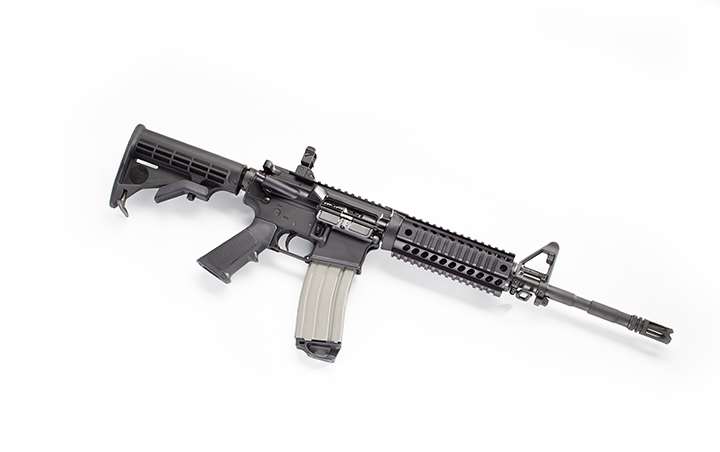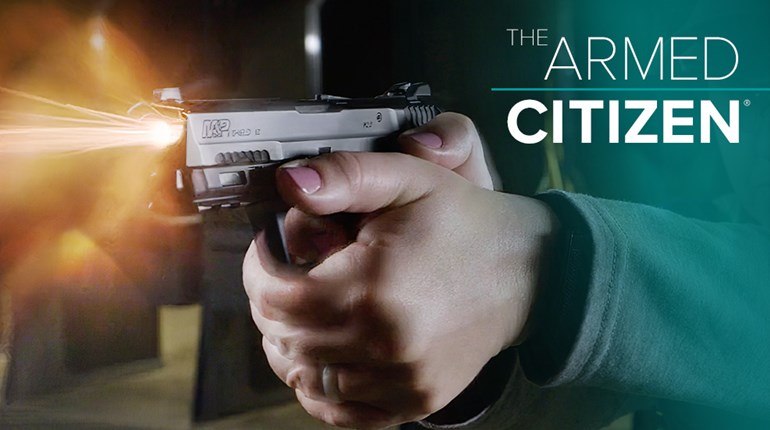
It seems impossible that we last dealt with carbines—short rifles, that is—as a serious home defense firearm well over two years ago (here). Quite evidently, time flies; just more so when you’re having fun. The topic is also ripe as an adjunct to our recent home carry considerations, so we’re due in at least two senses. Ergo, onward!
Part of our previous exploration dealt with clarifying the (stupid) terms of a laughably ignorant assertion: That a two-foot long, six-pound AR “pistol” was any sort of likely choice for carry (as then-White House Press Secretary Josh Earnest had suggested). In our defense, we felt as though we were walking a slightly delicate line at the time. The fact that such an article was impractical for discreet carry was our point, not that it was or is inappropriate for other defensive, protective or sporting uses. (Remember, these were created to let amputee veterans enjoy shooting again.) Being somewhere between six and 13 inches shorter than a standard AR carbine did, in fact, commend the pistol for home protection on maneuverability grounds alone.
The whole AR pistol business was rendered essentially moot by ATF review: Unless the bracing devices are modified, shouldering a pistol so equipped does not constitute a redesign or remaking of the firearm or device. Not an illegal SBR, in other words. Well done ATF, and thank you.

Caliber
The carbine allows consideration of more potent “stoppers” than are generally practical for carry, e.g., traditional handgun rounds from .380 ACP up to .45 ACP. Since weight is less of a factor, .223/5.56—and especially .300 AAC “Blackout,” with proper ammo selection—are entirely rational alternatives. As we pointed out here, carefully consider the penetrative power of whatever you select. Interior materials are unpredictable arresters of misses, and carbines can actually up-power handgun cartridges in significant fashion (9 mm, for instance, can jump to very nearly .357 Magnum energies, and .40 S&W higher yet).
There’s another important aspect to this that routinely goes under-considered in our view, and to describe it we’re making up a new unit of measure—power/shot/unit you. Mrs. Guns & Gear is a good example. She’s the athlete in the family, and a fine hand with anything she chooses to shoot. For us, defensive .45 ACP is merely stout, but for her considerably more modest stature, the energy rises to the level of “that’ll be enough of that” in a hurry. Defensive L-Tech CuHP, on the other hand, gets a cheerful “wow!” when sent from our JP GMR-13 PCC. Yet the latter delivers nearly 80 more ft-lbs of energy according to our chronograph, and more accurately and quickly in her hands, to boot.
We hope the point is clear: More defensive wherewithal, applied more quickly, is an obviously good thing however much we hope never to need it. But the intrinsic democracy of the carbine for people of considerably different builds also encourages practice, and there’s no downside to that.
Capacity
We aren’t talking round count here, but instead your capacity. It’s a simple truth that it is easier to attain a truly useful level of defensive skill with a rifle than with a handgun. Many factors contribute to this: Up to four points of body contact (as opposed to two), better natural “pointability” at likely target ranges, and better distribution of recoil all favor the long arms. (Note that traditional length rifles and shotguns sabotage this badly, and especially for Mrs. Guns & Gear statures—not just too long, but too much weight too far away from the body.)
Against this is the clearly superior maneuverability of the handgun, better one-handed utility, and—maybe—better retention if an encounter goes hand-to-hand. With practice, reloading should be a wash unless your home gun is a revolver, which, unhappily, will get clobbered by everything unless you really practice a lot.
But back to maneuverability for a second. We’ve seriously downgraded this as a carbine negative since we made our original foray on the topic, and for two reasons. First, home defense should almost never consist of “house clearing,” the main maneuverability challenge: Always retreat if you can. Such clearing is a complex, comparatively risky undertaking, and a skill all its own. Gathering your loved ones is the home version of “getting off the X,” and defending—if you must—your agreed-upon rally point is job Number 1. All of which should make the need to clear unlikely, and reserved for truly dire need. (That said, working a carbine-length rifle through doors and hallways can be learned without undue punishment. Get good training, and then go shoot some PCC in USPSA, we suggest. It’s mighty fun, and useful, maybe.)
Commonalities
An easy (to say nothing of money-saving) delight here. Varied sight technologies, stocks, grips, triggers and magazines are just the tip of the iceberg. Literally dozens of swap outs, substitutions and customizations can upgrade or improve your home defense PCC. Reloaders will benefit especially: We have loads in three different powders that run our handguns and carbines with equal facility—mighty handy.
Keep in mind a PCC can also be a superb training engine for your rifle-caliber arms, and at a tiny fraction of the per-round cost and wear. If you choose a .223/5.56 or .300 AAC for your home-defense carbine, this benefit fades somewhat.
Quality
PCCs aren’t new, as we observed in our April 2015 article. Variations on several themes—early and most notably from Colt for Vietnam era, Special Ops applications—have been around for decades. It is fair to say that these were, well, fair. With support from armorers and in limited application, they filled important roles. Civilian shooters, however, have a long claim on the concept and extensive application too—to the mid-19th century, in fact.
Keep in mind a PCC can also be a superb training engine for you rifle-caliber arms, and at a tiny fraction of the per-round cost and wear.What started to change in comparatively recent times is reliability as a function of precision and careful research. Six or seven years ago, we couldn’t have recommended a PCC in good conscience. Without substantial knowledge and resources, a “regular guy”—or gal (PCCs are an incredibly good match for most women shooters)—would have found fielding for fun an annoying project, and fielding for defense of self or loved ones a non-starter. We, for certain, would not have ventured it in our own stead.
But by the time JP Rifles offered their GMR-13 (and on which we spent our own dough in 2014, though now superseded by the GMR-15), the folks in Hugo, Minn., had broken through any remaining, consequential barriers. In the intervening three and a half years, only one description fits our sample: We’ve shot the quite literal hell out of it, including a fairly exemplary transit—by the rifle, anyway—of USPSA Optics Nationals. It remains more accurate, reliable and rugged than we ever conceived, even from JP. Unsurprisingly, many others are following suit (here, here and here) and benefitting—as are we—from assaults on JP’s incredibly high bar.
Carbines also have a last, if less earnest, appeal: Rarely will you find a firearm that is more fun to master. There are even .22 LR versions (and conversions for centerfire lowers) that will let you chop experimentation costs down further. Lastly, variety along almost every measure is growing practically daily. In particular, remember that if the nuts and bolts of the Stoner/AR pattern are not to your tastes, many others exist.
Though you won’t carry it much, consider a carbine for thoroughly modern, capable and versatile home defense. And Carry on.
Frank Winn has been studying arms and their relationship to tyranny, meaningful liberty and personal security all his adult life. He has been a firearms safety/shooting instructor for more than 20 years, and earned state, regional and national titles in several competitive disciplines.
































